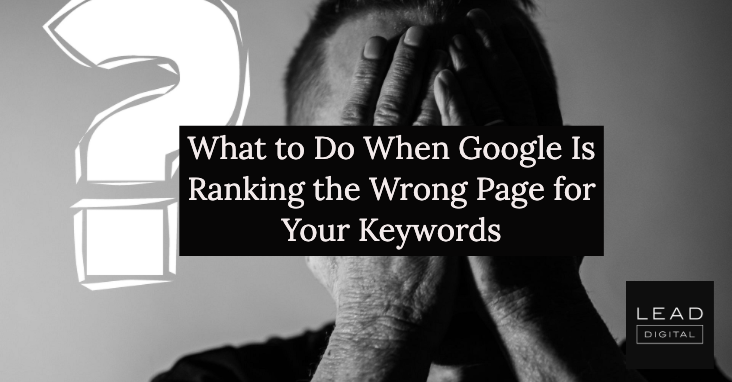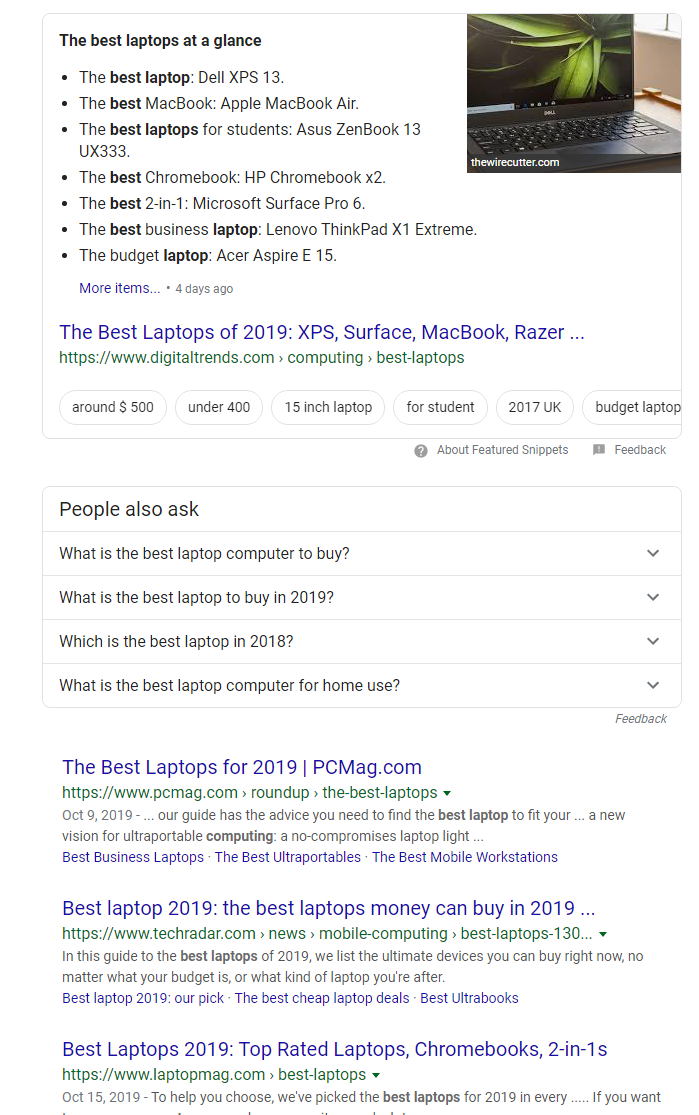
It’s typically a good thing when you find out your website is ranking for a keyword you’ve been targeting, right?
But what happens when, upon further investigation, you learn that the page you wanted to rank for a particular keyword isn’t the page that Google wanted to rank? (And that it’s another page on your site altogether?)
Whether the page is irrelevant or just not the best fit in your eyes, means that all the traffic that’s visiting your site from this newfound keyword isn’t going where you want. This might result in less conversions or a higher bounce rate than previously anticipated.
But don’t worry – this problem is more common than you might think, and it is fixable. Here’s how.
How to Improve a Page’s Ranking Signals for a Specific Keyword
Step 1: Evaluate the User Intent of Your Focus Keyword
User intent is essentially defined as the goal a person has when they type in a search term into Google.
Over the past year or two, ensuring the page you want to rank for a query matches the user intent has become vital.
- Is the goal to buy something? (Transactional)
- Is the goal to find a particular website or page? (Navigational)
- Is the goal to find helpful information to further answer a question you have? (Informational)
Tailoring your content to the intent is crucial.
For example, if your focus keyword was “best laptop computers” and you wanted your product page or category page to rank for this, you probably have no shot.

In the example above, you can clearly see that all the top ranking websites are from third-party aggregators and review sites where they list a comparison of the best laptops.
In fact, not one manufacturer or retail site is ranking on Page 1 for this so you need to shift focus away from this keyword altogether or understand what you are dealing with to better align.
Step 2: Evaluate the Content on the Page
Once you have ensured your content is matching the intent, you can then move on to ensuring the content on the relevant page is optimized.
Some questions you might want to ask yourself to further analyze are:
- Is my primary focus keyword in my page title?
- Do I reference my primary focus keyword in my description?
- How does the length of my copy compare to that against the Top 10 or Top 20 ranking sites?
- Do the competitor sites use shared semantic keywords that I need to incorporate into my page?
- Does my page answer questions a user might have to understand more about this topic?
Two tools that both do an excellent job helping you analyze and answer the questions above are SEMrush Writing Assistant and Clearscope.– Read more



